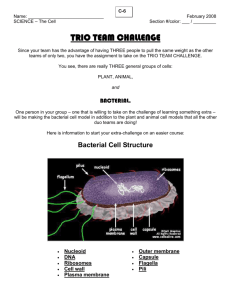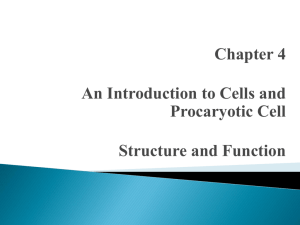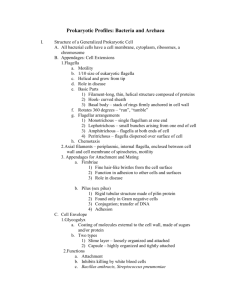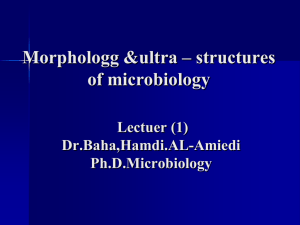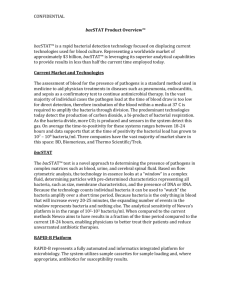Exam 1 samples - Faculty Web Pages
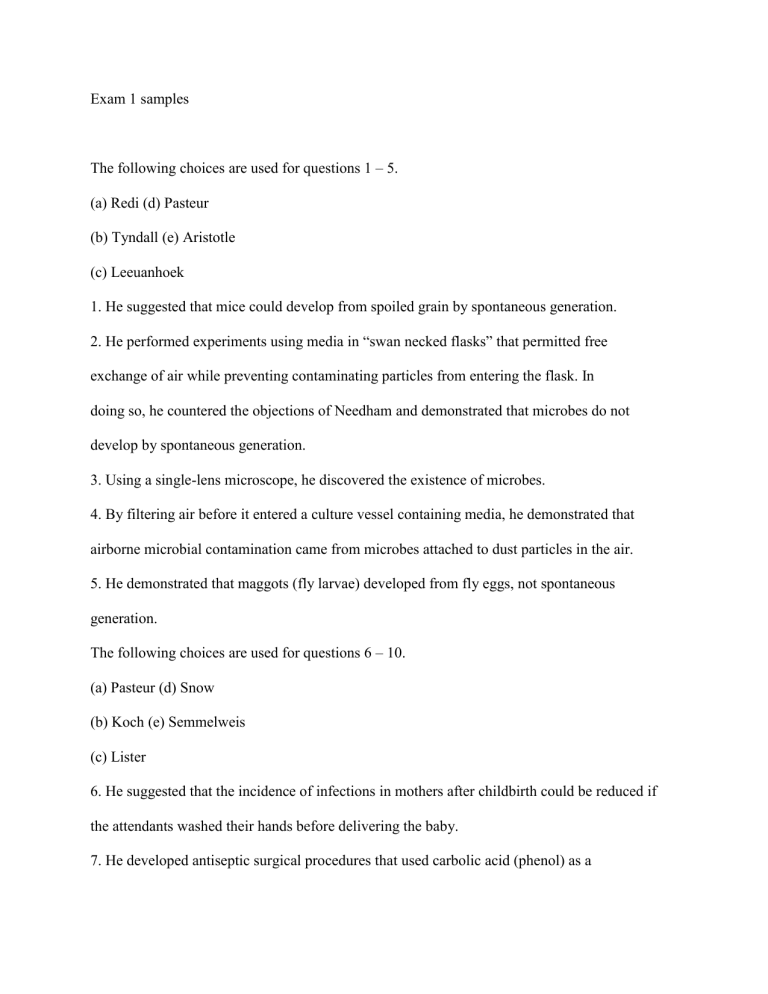
Exam 1 samples
The following choices are used for questions 1 – 5.
(a) Redi (d) Pasteur
(b) Tyndall (e) Aristotle
(c) Leeuanhoek
1. He suggested that mice could develop from spoiled grain by spontaneous generation.
2. He performed experiments using media in “swan necked flasks” that permitted free exchange of air while preventing contaminating particles from entering the flask. In doing so, he countered the objections of Needham and demonstrated that microbes do not develop by spontaneous generation.
3. Using a single-lens microscope, he discovered the existence of microbes.
4. By filtering air before it entered a culture vessel containing media, he demonstrated that airborne microbial contamination came from microbes attached to dust particles in the air.
5. He demonstrated that maggots (fly larvae) developed from fly eggs, not spontaneous generation.
The following choices are used for questions 6 – 10.
(a) Pasteur (d) Snow
(b) Koch (e) Semmelweis
(c) Lister
6. He suggested that the incidence of infections in mothers after childbirth could be reduced if the attendants washed their hands before delivering the baby.
7. He developed antiseptic surgical procedures that used carbolic acid (phenol) as a
disinfectant.
8. By using maps to localize the source of a cholera epidemic in London to a specific public water pump, he was able to reduce its spread by implementing public health measures.
9. He developed a vaccine for rabies.
10. Using colony isolation techniques on agar media, he isolated the anthrax and tuberculosis bacteria and demonstrated their roles in disease.
The following choices are used for questions 11 – 18.
(a) This property is found in both prokaryotic cells and eukaryotic cells.
(b) This property is found in prokaryotic cells.
(c) This property is found in eukaryotic cells.
(d) This property is found in viruses.
11. The ability to replicate by cell division.
12. Plasma membranes that contain specialized folds for the process of respiration.
13. A nucleus surrounded by a nuclear membrane.
14. Replication via a process of attachment and penetration of a host cell, disassembly, synthesis of protein and nucleic acid components, reassembly, and release from the host cell.
15. Particles containing either DNA or RNA, but not both.
16. Extensive internal membrane systems such as endoplasmic reticulum and Golgi apparatus.
17. Plasma membranes that serve as a selective transport barrier, separating the cytoplasm of the cell from the outside.
18. Flagella that are composed of a flagellin-based filament and a hook-and-rotor assembly.
19. Read each of the following three statements about bacterial colonies.
I. Ideally, an isolated bacterial colony contains cells of only a single species.
II. The morphology of a bacterial colony is a characteristic of the species.
III. Bacterial colonies can be isolated by streaking the bacteria onto a semisolid medium.
Which statement(s) is (are) true?
(a) I and II only (d) I only
(b) II and III only (e) I, II, and III
(c) I and III only
20. Mesosomes
(a) are proteins embedded in the outer membrane of gram-negative bacteria.
(b) are the organelles that assemble amino acids into proteins.
(c) are granules of glycogen found in the cytoplasm of certain bacteria.
(d) are regions of the bacterial plasma membrane that are rich in cholesterol.
(e) are plasma membrane folds found in certain bacteria.
21. Which of the following best describes the structure of peptidoglycan?
(a) a polymer of glycerol or ribitol linked by phosphate groups
(b) a polymer of alternating glucosamine and ethanolamine units linked by ester bonds
(c) a polymer of b-hydroxybutyrate units linked by pentapeptide bridges
(d) a polymer of alternating N-acetylglucosamine and N-acetylmuramic acid units linked by glycosidic bonds
(e) a polymer of O chain polysaccharide and core polysaccharide attached to a Lipid A molecule
22. A peptidoglycan layer that is about 50 nm thick is commonly seen in
(a) mycoplasmas.
(b) gram-positive bacteria.
(c) gram-negative bacteria.
(d) archaeobacteria. (e) acid-fast bacteria.
23. The cytoplasmic membrane of bacteria
A. Retains the cytoplasm and its contents
B. Acts as a selectively permeable barrier, allowing some molecules to pass while preventing the movement of others
C. Is the major site of ATP synthesis in aerobes
D.
All of the choices
24 Which of the following is not true of bacterial plasmids?
A. They can replicate independently of the chromosome
B. They may carry genes for drug resistance
C.
They are required for host growth and/or reproduction
D. They may carry genes that enhance survival of the bacterium under certain conditions
25 The lipopolysaccharide (LPS) that is found in the outer membrane of Gram-negative bacteria is also known as
A. Exotoxin
B. Teichoic acid
C. Murein
D.
Endotoxin

